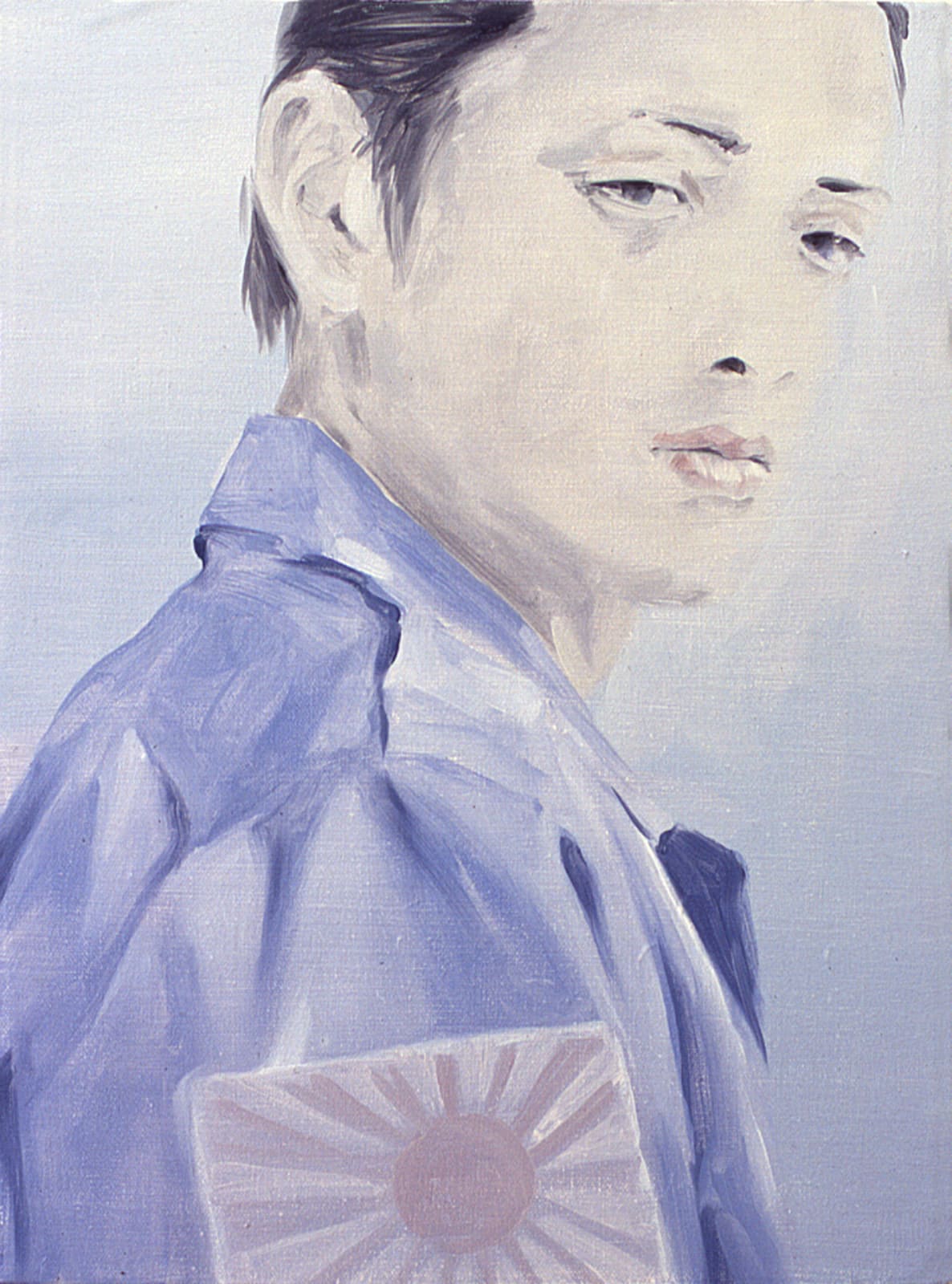

Group Exhibition Heavenly Creatures
Overview
Heavenly Creatures is an exhibition of figurative painting that visually runs the gamut. Investigating style, source, technique, image, and metaphor, artists today conjure enigmatic realms with Romantic associations.
Heavenly Creatures is an exhibition of figurative painting that visually runs the gamut. Investigating style, source, technique, image, and metaphor, artists today conjure enigmatic realms with Romantic associations.
At the conflux of all things related to Pop culture and film (magazines, music, literature, Internet, etc.,) mythological narrative, fantasy, eroticism, cynicism, animation, and dream-like imagery predominate. Historical painting with its qualities of direct observation get acknowledged, distilled, and discarded.
Director Peter Jackson's 1994 movie of the same title loosely inspires this show. His film in turn is inspired by the true-life story of two adolescent girls who commit murder. The film merges fact and fiction to lead the viewer into a complex character study. Which part of the film is fantasy and which is fact? Or at what point do they bleed into each other further altering our perception of this parallel world?
Such constructions of fantastical worlds, uncanny spaces, and broad narrative forms, often reveal our fascination and connection to the dark, the strangely absurd, and, ultimately the mysterious.
Through stratums of representation the artists in "Heavenly Creatures" hover between local and global, past and present, and East/West hybrids.
In today’s world technological innovation seems to consume us all who yearn to know and do more in less time, and faster. As a subtext of living a sense of foreboding and doom permeates the culture. Our icons have failed us, from celebrities, to clergyman, to politicians and athletes. Yet in contemporary art there exists a dogged attempt at reconciling the polarizing influences surrounding us. How does one find truth amidst chaos?
A recent lecture at the Schirn Kunsthalle, Frankfurt discussed some of these matters as related to New Romanticism in contemporary art and the artists search for an “ideal world”. Such longing for paradise, magic, and beauty is born out of this “information-age romanticism”, as I like to call it. What can artists do with such knowledge culled from an overdose of source material extracted out of the material and virtual?
Threading many periods and having many perspectives, the charged nature in much of the figuration in “Heavenly Creatures” is a response to images of war and terror, and the deterioration of nature. These are pictures that engage the emotions while evolving out of our well-informed coolly detached image data bank. They are as cynical as they are hopeful.
Hernan Bas, (b. 1978 Miami, Florida) was recently included in the 2004 Whitney Biennial of American Art. Bas's work harks back to the era of Romanticism while redefining the modern day dandy. This fascination with historical painting and literature result in fairy tale works that are at once familiar and fantastic. Bas is based in Miami. Education: New World School of Fine Arts, Miami Florida.
The Toronto based artist Paul P, (b. 1977 Hamilton, Ontario) cross-references pre-Aids male erotica and the decorative motifs in Whistler paintings. In highly refined drawings fantasy and sexual desire are secondary to the distillation of period style within the current discourse. Education: B.F.A. York University, Toronto, 1996-2000.
Munro Galloway (b. 1971 Tacoma, Washington) uses alluring loosely painted figures as a springboard to grapple with the way painting constructs its relation to its history, to mass culture, and to the point where high culture and consumerism meet. Galloway is based in New York City. Education: 1994 Brown University, B.A.,
Art/Semiotics, 2003- Bard College.
The loose expressionist paintings of New York based Katherine Bernhardt (b. 1975 St. Louis, Missouri) take issue with mainstream culture's depiction of femininity and beauty. She references the advertising and editorial pages in magazines, turning fashions slick airbrushed representations into raw, primitive Pop figurations. Education: 1998 B.F.A., School of the Art Institute of Chicago, IL, 2000 M.F.A., School of Visual Arts, New York, NY.
Tracy Nakayama (b. 1974 Honolulu, Hawaii) explores sexuality from a female perspective and a 1960's and 1970's era aesthetic. Couples are naturalistically drawn in color ink, amidst minimal backgrounds naked and engaged in sex. Her work celebrates life, love, and friendship between man and woman. Nakayama lives in New York City. Education: B.F.A. (1996) California College of Arts and Crafts, Oakland, CA., M.F.A. (1998) School of Visual Arts, New York, NY.
Tam Ochiai (b. 1967 Yokohama, Japan) depicts the world of fashion, film, and music in a delicate washed out palette in the spirit of "anti-painting". Waif-like girls, words, smears of color, and an East meet's West sensibility pervade. Melancholic and ghostly, his figuration has a guileless energy. He is based in New York City. Education: B.A. (1991) Wako University, Tokyo M.F.A. (1993) New York University.
In graphically styled wall and paper drawings, collages, texts, and paintings on canvas, Rita Ackermann (b. 1968 Budapest, Hungary) creates a narrative that often portray nymph female characters modeled after herself. As if in a fairy tale where strange things can occur, her universe is of dark pleasures, chaos, violent undertones, and a search for the sublime. Ackermann lives and works in New York City. Education: 1989-92 Academy of Fine Arts, Budapest, 1992-93 The New York Studio School of Painting, Drawing, and Sculpture (Hanes Foundation) New York.
Hideaki Kawashima (b. 1969 Nagoya, Japan) seeks the pure in an imperfect world. Abstract backgrounds, simple lines and soft color are used to portray ethereal feline looking faces. They seem half alien with the doleful look of the "seeker". Kawashima is based in Tokyo. Education: 1991 B.F.A. Tokyo Zokei University, Japan.












































































































































































